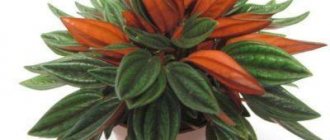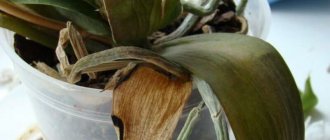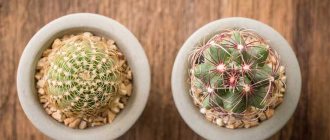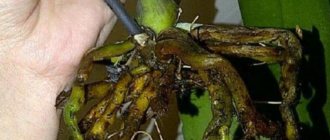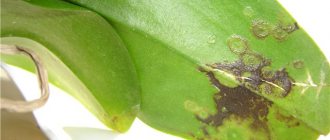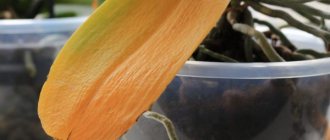The houseplant asparagus (asparagus) is often found in homes, schools, and offices. This flower is loved for its delicate greenery, fast growth and unpretentiousness. But many gardeners have to face a problem when the plant begins to wither. Not everyone knows what to do if the asparagus turns yellow and crumbles. It is necessary to quickly begin to identify and eliminate the causes of this phenomenon. Then the plant can be saved.
What to do if aspargus turns yellow and crumbles?
Asparagus cannot be called a plant that requires special habitat conditions.
But there are still simple rules that should not be ignored.
So why do Asparagus leaves turn yellow and fall off?
There are several causes of this disease, by eliminating which and providing proper care for the flower, you can bring the flower back to life:
- Excessive watering;
- Insufficient or excessively bright light;
- Overdrying of the earthen coma;
- Low humidity (dry air) indoors;
- High temperature in the room;
- Filling the space of the pot with roots.
If a disaster occurs and the asparagus leaves fall off, don’t panic.
The first step is to trim off the bare shoots left behind, and then move the pot to optimal conditions for the plant.
Why do leaves turn yellow and fall off?
Causes
- Lack or excess of moisture. Asparagus prefers regular, moderate watering. Therefore, drying out of the soil leads to the falling of leaves. At first it begins to turn yellow and only later disappears. But it’s not just a lack of moisture that can cause problems. Excess moisture can lead to root rot - asparagus reacts to this by dropping its leaves.
- Insufficient lighting. Asparagus is a photophilic plant. However, not all lighting is suitable for this. Diffused light is ideal. If it is exposed to strong sunlight for a long time, it may get burned. Leaves appear dry or yellowed. However, if the plant does not receive enough light in the shade, the leaves will become dull and faded, turn yellow and droop.
- Dry air. Plants do not like too dry air and react to it by curling or dropping their leaves. First, the edge of the leaf dries out, then turns yellow and after a while falls off.
- Lack or absence of fertilizers. Failure to fertilize causes a domino effect. The leaves first turn pale, then may turn yellow and fall off. With severe nutrient deficiency, the plant dies.
- Transfer is not possible. Since the plant's root system develops quickly, it becomes cramped in the old pot. Eventually it slows down and loses its leaves.
- Pest invasion. In most cases, insects and bacteria not only coexist with the plant, but also parasitize it, feeding on its sap. Under favorable conditions, the colony will grow and eventually lead to the death of the asparagus.
Watering mode
Asparagus (asparagus) is watered abundantly, however, no more than 3 times a week.
It is best to do this immediately after the top layer of soil has dried - this is determined by the touch of a finger. Care must be taken to ensure that water does not remain in the pan after the procedure.
In winter, the intensity of watering is reduced, doing it a few days after the soil dries. There is no need to let the soil dry completely.
Variety of species
At the moment, garden and ornamental asparagus is grown at home in Russia.
As for indoor varieties, the following are very popular now:
Meyer's asparagus (Asparagus meyeri) - looks like a shrub up to 50 centimeters high. Most often it grows in small plantations up to 6 meters in diameter. It has a second name - fox tail. It is also most often found in Central Asia. Tolerates heat and lack of moisture well.
Asparagus plumosus is an original shrub covered with miniature scales. The stems curl a little and resemble a spiral. During the period of active flowering, the shoots are covered with small white flowers. Fruits with dark berries that are not suitable for consumption.
Sprenger's asparagus (Asparagus densiflorus Sprengeri) is one of the most popular asparagus in our latitudes. The shrub is about 45 centimeters high, but some shoots can grow up to 1.5 meters. During the flowering period it is covered with white flowers in the form of inflorescences.
May be interesting Diseases of phalaenopsis orchids and their treatment Cyperus: planting and care at home, transplantation and propagation Is violet a companion of loneliness?
The leaves are miniature, more like scales. It bears fruit with berries, but under no circumstances should they be eaten. Propagation by seeds can be done after you have collected the fruits; at home, asparagus also bears fruit. Below is a photo of what the plant looks like during the flowering period and with ripe berries.
But this propagation option requires a lot of effort and time, so it is best to plant rhizomes with young shoots. Today, caring for asparagus at home and propagating it is best done using step-by-step photos.
Use expert advice that shows you in detail how to water, prune and replant your flower.
Lighting
Asparagus loves a well-lit room with protection from direct sunlight. The best place for it would be east or west windows. In the south, you can keep it not on the windowsill itself, but nearby, providing shading during the midday heat.
In summer, the flower can be taken out into the fresh air, but the place is chosen in partial shade, where it will not be exposed to direct sun.
ATTENTION! Exposure of asparagus to direct rays threatens the leaves with sunburn, which will cause them to turn yellow and fall off.
Proper plant care
If the leaves have yellowed slightly, then it is enough to carry out prevention. During this period, you should adjust the watering regime, remove the pot with the plant away from sunlight or, conversely, place it on the windowsill. Asparagus needs to be fed additionally and the humidity in the room must be monitored.
But when the plant feels so bad that the leaves fall off, it is necessary to provide comprehensive care for the bush. Experienced florists recommend transplanting them into a new container first. During the procedure, you should carefully examine the roots and the plant itself for the absence of rot, dry branches, or damage. After transplantation, asparagus is fed with fertilizers containing nitrogen or organic mixtures. If the feeding is chosen incorrectly, it may even die.
The plant is quite resistant to pests and is rarely affected by diseases. Basically, the leaves turn yellow if the conditions are not suitable for it or the owner does not care for it correctly. All damaged shoots should be cut to the ground. The affected areas of the plant almost do not develop. In the spring, during active growth, new healthy shoots will appear on the bushes.
It is important to let the spears grow and fall out on their own. After this, the bush begins to prepare for wintering
It is worth paying attention that it can be shaded by other taller plants, so you need to be careful when choosing a place. Growing shoots can also be tied with strings
Winter activities
During frosts, the bush should be pruned, but the plant must be watered regularly. The soil in the pot should not dry out even in winter. Slightly moist soil will be comfortable for the plant. In this case, the substrate does not need to be filled so that the water stands in the pot. Moisture should not accumulate. When choosing a watering schedule, look at the season. In winter, bushes are watered less frequently (two to three times a week), and in summer, every other day or daily. In summer, the outside temperature, amount of light, and air humidity are also taken into account.
Mulching with compost, leaves or other material helps control weed growth. This procedure will allow the plants to receive more nutrients. But the layer should not be too dense so that it is easy for new shoots to break through it
It is important to pay attention to indoor air humidity
If the room is too dry, then you need to place a jar of water near the radiator. The liquid will gradually evaporate and make the air more humid. For this purpose, you can use a dampened towel. Some gardeners use humidifiers. In hot weather, it is recommended to spray asparagus with water, and remove the pot away from the sun; suitable: east or west window.
If the plant is on a southern windowsill, then it needs to be shaded. It’s enough just to cover the window with a curtain or move the pot a little lower, moving it from the windowsill to the bedside table
In winter, it is important that the container is located away from the battery or heater
When the plant turns yellow, it must be fed with mineral organic mixtures. It is best to use ready-made mixtures for decorative foliage plants. The plant should be replanted once every 12 months when it is young. After reaching the age of four to five years, transplantation is carried out every two to three years. The container should have a diameter several centimeters larger than the previous one. It is best to carry out the transplantation procedure in the spring. If there are pests, the gardener should use folk recipes (garlic infusion, soap solution), you can wipe the leaves with alcohol.
In case of severe damage, it is necessary to use more toxic drugs. In specialized departments, Confidor, Mospilan and other products are used to combat insects. Timely measures will help quickly return lush greenery. With proper maintenance and care, the plant begins to grow actively.
Humidity
The plant loves moist air; its dryness is one of the main reasons for yellowing and falling of asparagus.
In summer, the branches must be sprayed with settled water from a sprayer.
The most favorable time for this is in the morning at dawn or in the evening at sunset.
ADVICE! If the problem of low humidity is particularly acute (for example, during the heating season in winter), the pot can be placed on a tray with damp expanded clay or moss. This will saturate the air near the flower with additional moisture. There is no need to interrupt spraying.
Occasionally you can take a bath in the bathroom under the shower. During the procedure, the soil is protected with a bag from tap water getting into it.
Proper plant care
If the leaves have yellowed slightly, then it is enough to carry out prevention. During this period, you should adjust the watering regime, remove the pot with the plant away from sunlight or, conversely, place it on the windowsill. Asparagus needs to be fed additionally and the humidity in the room must be monitored.
But when the plant feels so bad that the leaves fall off, it is necessary to provide comprehensive care for the bush. Experienced florists recommend transplanting them into a new container first. During the procedure, you should carefully examine the roots and the plant itself for the absence of rot, dry branches, or damage. After transplantation, asparagus is fed with fertilizers containing nitrogen or organic mixtures. If the feeding is chosen incorrectly, it may even die.
The plant is quite resistant to pests and is rarely affected by diseases. Basically, the leaves turn yellow if the conditions are not suitable for it or the owner does not care for it correctly. All damaged shoots should be cut to the ground. The affected areas of the plant almost do not develop. In the spring, during active growth, new healthy shoots will appear on the bushes.
It is important to let the spears grow and fall out on their own. After this, the bush begins to prepare for wintering
It is worth paying attention that it can be shaded by other taller plants, so you need to be careful when choosing a place. Growing shoots can also be tied with strings
Winter activities
During frosts, the bush should be pruned, but the plant must be watered regularly. The soil in the pot should not dry out even in winter. Slightly moist soil will be comfortable for the plant. In this case, the substrate does not need to be filled so that the water stands in the pot. Moisture should not accumulate. When choosing a watering schedule, look at the season. In winter, bushes are watered less frequently (two to three times a week), and in summer, every other day or daily. In summer, the outside temperature, amount of light, and air humidity are also taken into account.
Mulching with compost, leaves or other material helps control weed growth. This procedure will allow the plants to receive more nutrients. But the layer should not be too dense so that it is easy for new shoots to break through it
It is important to pay attention to indoor air humidity
If the room is too dry, then you need to place a jar of water near the radiator. The liquid will gradually evaporate and make the air more humid. For this purpose, you can use a dampened towel. Some gardeners use humidifiers. In hot weather, it is recommended to spray asparagus with water, and remove the pot away from the sun; suitable: east or west window.
If the plant is on a southern windowsill, then it needs to be shaded. It’s enough just to cover the window with a curtain or move the pot a little lower, moving it from the windowsill to the bedside table
In winter, it is important that the container is located away from the battery or heater
When the plant turns yellow, it must be fed with mineral organic mixtures. It is best to use ready-made mixtures for decorative foliage plants. The plant should be replanted once every 12 months when it is young. After reaching the age of four to five years, transplantation is carried out every two to three years. The container should have a diameter several centimeters larger than the previous one. It is best to carry out the transplantation procedure in the spring. If there are pests, the gardener should use folk recipes (garlic infusion, soap solution), you can wipe the leaves with alcohol.
In case of severe damage, it is necessary to use more toxic drugs. In specialized departments, Confidor, Mospilan and other products are used to combat insects. Timely measures will help quickly return lush greenery. With proper maintenance and care, the plant begins to grow actively.
Temperature
Asparagus is a rather unpretentious plant; the optimal conditions for its maintenance are considered to be a standard room temperature of 20–24 degrees. During the rest period, it is allowed to lower the temperature to 15–18 degrees. At this time, the plant “sleeps” and creating a cool environment allows it to accumulate as much strength as possible for spring growth and development.
Unfortunately, in a living room, it is unlikely that anyone will decide to lower the temperature like this, so just try to move the asparagus to north-facing windows and keep it away from heating appliances.
Transfer
The signal for replanting is the sprouting of roots from the holes in the pot.
A young plant needs to be replanted annually - its roots grow very actively and quickly fill the entire container.
As soon as the flower is 4-5 years old, it is enough to replant it once every 2-3 years. If asparagus is not planned to be propagated by division, then with each procedure the pot is selected 2-3 centimeters larger than the previous one.
Moderate root trimming is allowed. A thick layer of expanded clay drainage is poured into the bottom of the new pot, and the soil is mixed from two parts of leaf and humus soil and one part of sand.
Within 5-7 days after transplantation, the plant adapts to the changed conditions and recovers from the stress it suffered. During this period, it is best not to feed it, not water it, or expose it to bright light.
Proper plant care
If the leaves have yellowed slightly, then it is enough to carry out prevention. During this period, you should adjust the watering regime, remove the pot with the plant away from sunlight or, conversely, place it on the windowsill. Asparagus needs to be fed additionally and the humidity in the room must be monitored.
But when the plant feels so bad that the leaves fall off, it is necessary to provide comprehensive care for the bush. Experienced florists recommend transplanting them into a new container first. During the procedure, you should carefully examine the roots and the plant itself for the absence of rot, dry branches, or damage. After transplantation, asparagus is fed with fertilizers containing nitrogen or organic mixtures. If the feeding is chosen incorrectly, it may even die.
The plant is quite resistant to pests and is rarely affected by diseases. Basically, the leaves turn yellow if the conditions are not suitable for it or the owner does not care for it correctly. All damaged shoots should be cut to the ground. The affected areas of the plant almost do not develop. In the spring, during active growth, new healthy shoots will appear on the bushes.
It is important to let the spears grow and fall out on their own. After this, the bush begins to prepare for wintering
It is worth paying attention that it can be shaded by other taller plants, so you need to be careful when choosing a place. Growing shoots can also be tied with strings
Winter activities
During frosts, the bush should be pruned, but the plant must be watered regularly. The soil in the pot should not dry out even in winter. Slightly moist soil will be comfortable for the plant. In this case, the substrate does not need to be filled so that the water stands in the pot. Moisture should not accumulate. When choosing a watering schedule, look at the season. In winter, bushes are watered less frequently (two to three times a week), and in summer, every other day or daily. In summer, the outside temperature, amount of light, and air humidity are also taken into account.
Mulching with compost, leaves or other material helps control weed growth. This procedure will allow the plants to receive more nutrients. But the layer should not be too dense so that it is easy for new shoots to break through it
It is important to pay attention to indoor air humidity
If the room is too dry, then you need to place a jar of water near the radiator. The liquid will gradually evaporate and make the air more humid. For this purpose, you can use a dampened towel. Some gardeners use humidifiers. In hot weather, it is recommended to spray asparagus with water, and remove the pot away from the sun; suitable: east or west window.
If the plant is on a southern windowsill, then it needs to be shaded. It’s enough just to cover the window with a curtain or move the pot a little lower, moving it from the windowsill to the bedside table
In winter, it is important that the container is located away from the battery or heater
When the plant turns yellow, it must be fed with mineral organic mixtures. It is best to use ready-made mixtures for decorative foliage plants. The plant should be replanted once every 12 months when it is young. After reaching the age of four to five years, transplantation is carried out every two to three years. The container should have a diameter several centimeters larger than the previous one. It is best to carry out the transplantation procedure in the spring. If there are pests, the gardener should use folk recipes (garlic infusion, soap solution), you can wipe the leaves with alcohol.
In case of severe damage, it is necessary to use more toxic drugs. In specialized departments, Confidor, Mospilan and other products are used to combat insects. Timely measures will help quickly return lush greenery. With proper maintenance and care, the plant begins to grow actively.
Source
Pests
Asparagus can be affected by aphids, scale insects or spider mites.
IMPORTANT! Pest control can be a serious problem - this plant does not tolerate insecticide treatments very well. Therefore, it is optimal to identify them in the early stages of infection.
Aphids are small green or yellow insects. They live most abundantly on the underside of leaves, where they can be seen without much effort. Signs of aphids are the presence of a whitish coating on the leaves, in which fungal diseases appear without treatment.
Before treating the plant, wipe it with a sponge and soapy water.
Apply chemical spraying carefully, after first checking the reaction of the flower on one branch.
The scale insect is a parasitic insect that feeds on plant sap. They stick to the leaves and trunk, which leads to their drying out.
A sign of scale insect infestation is the appearance of brown, raised blisters on the leaves.
Adult scale insects are removed from the plant manually with a sponge or cotton swab. After this, the entire plant is washed with soapy water. If the scale colony is large, spraying with chemicals may be necessary. Before planting, you must check the plant’s reaction.
Spider mites are red insects. Its sign is the appearance of a white thin web on the leaves of the plant.
When fighting them, the flower is actively treated with a soapy sponge. There is no need to wash off the soap right away - it is best to wait 3-4 hours to ensure the death of the pest.
After water procedures, the plant is placed in a plastic bag to create a zone of high humidity.
IMPORTANT! The causes of yellowing and falling of asparagus leaves are usually a gross violation of the care regime. This may be excessive or insufficient lighting, overwatering or drying out the soil, or low humidity.
If a disaster occurs, you need to prune the affected branches and optimize the conditions. In addition to diseases, the plant can be affected by pests, and combating them is difficult due to the undesirability of using chemicals.
If you want to see asparagus on your windowsill or on your property, then you can read information about growing from seeds, as well as about caring for the plant.
How to save asparagus
There are plenty of reasons why a houseplant begins to wilt. Emergency measures will help save him. If asparagus turns yellow, do the following:
- The shoots are inspected. If pests are detected, the plant itself, the pot and the tray are treated with insecticide. After a while, the procedure must be repeated.
- Dried and parasite-infested areas are cut off.
- The plant is removed from the pot and the roots are examined. Dry and rotten roots are removed, as well as excess root mass.
- If necessary, asparagus is transplanted into a larger pot. Sometimes a complete replacement of the soil is required.
- The flower is fertilized, watered and sprayed.
- They check the rules for proper care of the plant and create comfortable conditions for it.
Sometimes there is no reason to worry. When one of the stems turns yellow and falls off, it may mean that its life cycle has come to an end. A dying branch just needs to be cut off. Probably, a new healthy shoot will soon appear in its place.

